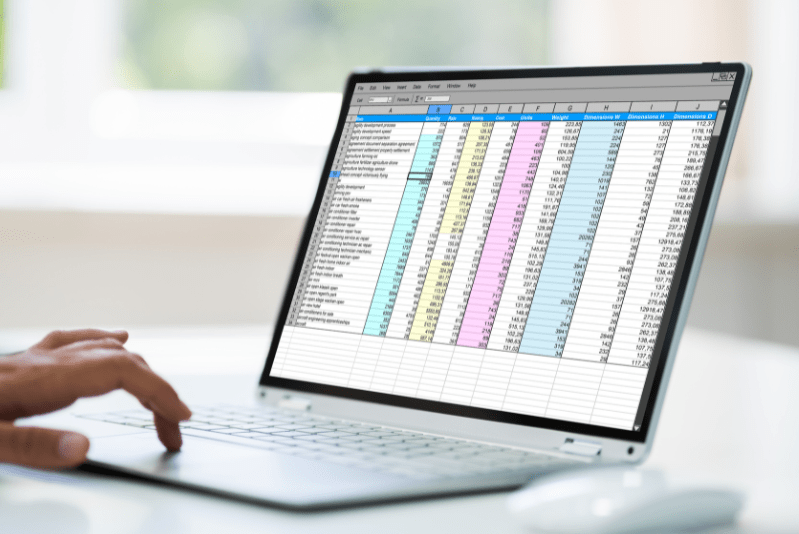Good credit control is invaluable to any business that wants to improve its cash flow. A carefully considered credit control policy not only boosts cash flow, but it can help to prevent business failure because of payment delays and increasing bad debt from customers.
All too often, a small business in the initial growth stages may not feel the necessity of a formal credit control process, but soon enough as the success and turnover of the business increases, the challenges of managing client’s credit without a structured system become evident.
What is Credit Control
Credit control management provides a structured process to ensure that your customers don’t take too long to pay you.
When you create and issue an invoice, it should have your payment terms clearly stated, including the number of days you will allow for payment.
These terms will probably be different from one company to another. Frequently used credit terms include 7 days, 14 days, 30 days or even 60 days. If a customer takes longer than the stated payment terms to pay you, then you will need to chase them for payment. This is essentially credit control.
Improve cash flow through credit control
Cash flow is a businesses lifeline. Without it, a company can’t pay its bills, invest in new products or technology or employee new staff. Which is why credit control is essential – its one of the key ways that a business can guarantee that they have sufficient funds to continue operating.
By implementing a good credit control process and monitoring payments owed to your company, you can ensure that you have enough money coming into the business, allowing for your own outgoing business costs.
A well-considered credit control policy will limit the amount of time you spend chasing payments and you will save money. How? Customers are more likely to pay you on time if they can clearly see your credit terms and know that you will chase them if their payment is late.
Quicker payment from customers means that your own business cash flow will be better, and you are less likely incur late payment fees from your own suppliers.
Minimise risk through credit control
As you acquire an increasing number of clients or customers, your exposure to credit risk also increases. The importance of an effective credit control system is vital as it allows you to generate automated reports and more easily chase unpaid invoices. Should you then be faced with a certain amount of bad customer debt (or other losses), you will be better prepared financially to withstand these challenges and minimise your risk of business failure.
By achieving good cash flow with a sensible credit control system in place, you are also much less likely to need short-term credit such as credit cards or loans which are often accompanied by high interest rates.
Deciding on your Credit Control Policy
The first step to getting credit control in place is to decide what your credit policy will be. Will you offer generous credit terms to entice new customers, or do you need to keep closer control of your customer payments?
In reality, having just one set of credit terms for your customers might not be the right approach and you should probably assess customers on an individual basis to determine whether you think they will be able to pay their account on time.
You might want to consider doing credit checks on larger accounts, even if you do not apply this to all customers. A credit check will demonstrate a customer’s typical payment behaviour and indicate if they regularly pay invoices late and may be a risk to your business.
Equally, you may have particularly valuable or established customers that you prefer to offer more favourable terms to than newer or unknown customers. This would be another scenario when a case-by-case method is best applied. However, too many different credit terms could become complex to manage when it comes to running your credit control processes.
Only you can determine the most appropriate policy for your business but most importantly once you have decided, you will need to ensure that your staff are clear about the policy and that it is being used correctly.
You should also consider what credit limit you will set, and you may want to start this off at a lower level and increase the limit over time once you are confident that your customer consistently pays their account on time.
Accounting Software for Credit Control
There are countless accounting systems available to help manage your credit control policy, and just some of the more well-known providers include Xero, Quickbooks and FreeAgent.
To operate your credit control process as efficiently as possible, you need to have the correct invoicing address for your customers and double check information that they have provided you with against Companies House. Some companies have will have an Accounts Payable team, often with a dedicated email address to which you should direct invoices for payment. Larger companies may also use a Purchase Order (PO) system and they may require that a PO number is quoted on the invoice.
Once your system is up and running and your customers all have credit terms (and limits) applied to their accounts, you will need to invoice promptly and regularly review your ‘aged debtors’ or ‘receivables’ reports on the system. This will show you how much your customers owe and how old the invoices are. How frequently you review your aged debtors list, probably depends on how many invoices you are issuing.
Other useful settings, include those that allow you to automatically send statements and reminder letters. Bear in mind that you must promptly enter any customer payments received if you use these functions, otherwise you could have unhappy customers on your hands if they have already paid up.
With the right accounting software setup in place, much of your credit control process can be automated which will save you significant time when it comes to identifying overdue debt which needs to be chased.
Chasing your Debtors
Once you have your credit system in place and your invoicing and payment allocation processes are being completed promptly, you should be able to generate that all important list of aged debtors.
If you run the list of aged debtors each week and simply identify the customer accounts which are ‘overdue’ then these are the customers, you will be chasing.
The first and simplest step to addressing overdue debt, is to set your accounting software to automatically issue monthly statements of account to customers. Just putting in place this simple reminder may be enough to prompt some overdue customers to pay what’s owed because they might have genuinely missed or forgotten about an invoice.
The next step, for accounts which remain overdue, would be to issue a first, second and final demand letter. This could be done manually but equally your accounting software will be equipped to automatically do it if you configure the settings. This is another time saver, before you get to any problematic overdue accounts. It’s worth bearing in mind at this stage though, that you will know your customers better than an automated system, and a reliable customer could simply have missed an invoice because of a change in systems or personnel etc. In this case, a simple phone call could be best and friendliest first point of contact.
One of the key takeaways when chasing overdue debt is that speed is essential. The faster you chase up outstanding debt the more likely it will be paid.
As your credit control processes develop you will gain an understanding of which customers are slow to pay, and the best approach to take in dealing with them. Varying levels of intervention will be needed depending on the customer, and while some will simply need a reminder call or letter, it may take a persistent approach to achieve the desired outcome with others.
Don’t feel guilty!
This is probably the hardest part for many small business owners. Often people feel awkward asking customers to pay their outstanding debts. And yet, the money is yours and you’re not asking for anything unreasonable. If you settle your debts on time, then why should your customers expect to be treated any differently?
It might help to remember that every pound owed by your customer is one less available to your business, effectively limiting your cashflow. How effectively you can pay your own suppliers and staff or make important investments for your business is affected by how promptly your customers are paying you!
Top Credit Control Tips for Small Businesses
- Organisation is key – decide on your credit control policy, communicate with your staff and put a system in place
- Take advantage of accounting software – the bulk of your credit control processes can be taken care of automatically with the right software and system in place
- Know your customers – amend your policy on a case-by-case basis for certain customers
- Speed is critical – the faster you chase overdue debt, the more likely it will be paid
- Remember it’s your money – remain disciplined when it comes to enforcing your policy because it’s your profits on the line
If you wondering where to start with your credit control policy, then feel free to get in touch and a member of the team will be happy to lead you in the right direction.




